Renault Captur vs Renault Scénic – Differences & prices compared
Compare performance, boot space, consumption and price in one view.
Find out now: which car is the better choice for you – Renault Captur or Renault Scénic?
The Renault Captur (SUV) comes with a Petrol MHEV, LPG, Petrol or Full Hybrid engine and Manuel or Automatic transmission. In comparison, the Renault Scénic (SUV) features a Electric engine with Automatic transmission.
When it comes to boot capacity, the Renault Captur offers 422 L, while the Renault Scénic provides 545 L – depending on how much space you need. If you’re looking for more power, decide whether the 158 HP of the Renault Captur or the 220 HP of the Renault Scénic suits your needs better.
In terms of consumption, the values are 4.50 L per 100 km for the Renault Captur, and 16.60 kWh for the Renault Scénic.
Price-wise, the Renault Captur starts at 20400 £, while the Renault Scénic is available from 34600 £. Compare all the details and find out which model fits your lifestyle best!
In a head-to-head comparison between the Renault Captur and the Renault Scénic, the Captur emerges as the sportier and more compact option, ideal for urban explorers seeking agility and style. Conversely, the Scénic offers a more spacious and versatile interior, catering well to families needing room for additional passengers and luggage. Both models offer advanced technological features and efficient engines, but your choice will depend on whether you prioritize nimble city maneuverability or family-friendly space.
Renault Captur
The Renault Captur is a compact SUV that combines stylish design with practical functionality, making it a popular choice for urban drivers. Its interior offers a versatile and comfortable space, featuring high-quality materials and modern technology. On the road, the Captur delivers a smooth and efficient driving experience, perfect for both city commutes and weekend adventures.
details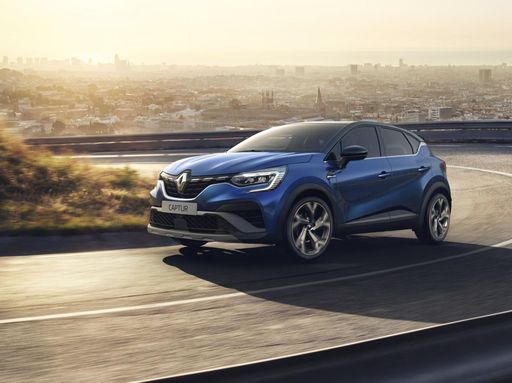 @ renault-presse.de
@ renault-presse.de
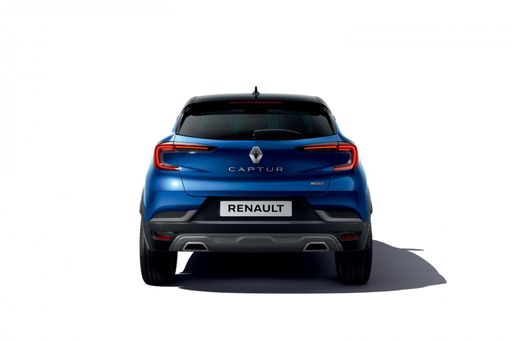 @ renault-presse.de
@ renault-presse.de
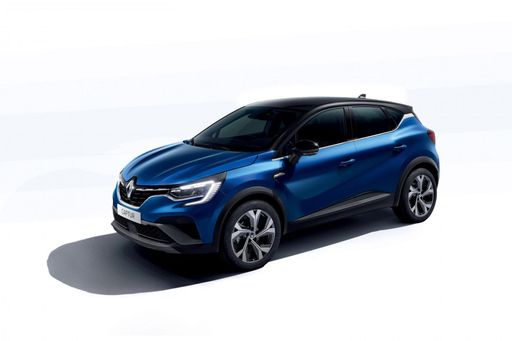 @ renault-presse.de
@ renault-presse.de
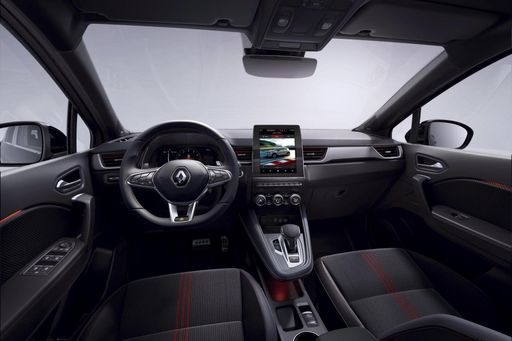 @ renault-presse.de
@ renault-presse.de
Renault Scénic
The Renault Scénic, with its distinctive design, captures attention through its sleek and modern aesthetic. Its interior is thoughtfully crafted, offering ample space and comfort for family travel or long journeys. The Scénic stands out with a strong emphasis on practicality, making it an ideal choice for those seeking both style and functionality in a vehicle.
details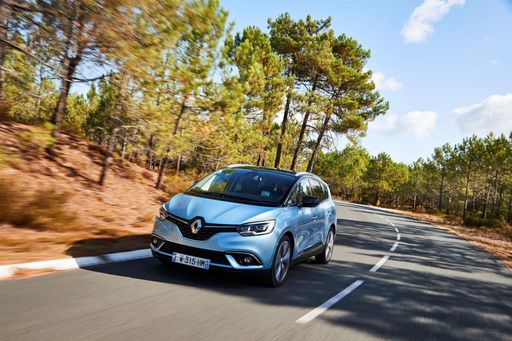 @ Renault
@ Renault
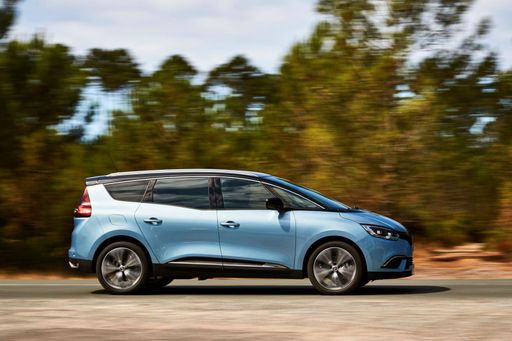 @ Renault
@ Renault
 @ Renault
@ Renault
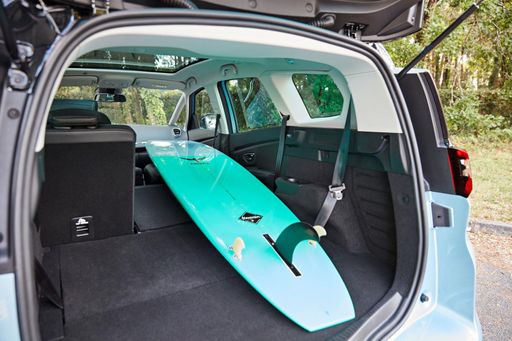 @ Renault
@ Renault
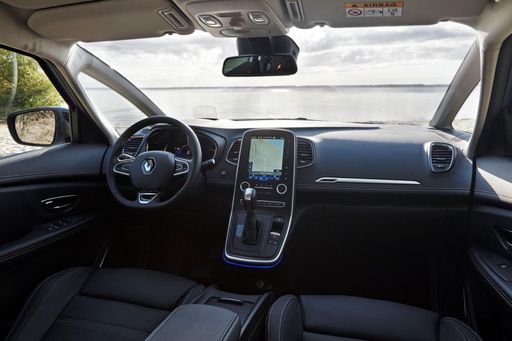 @ Renault
@ Renault
Renault Captur vs. Renault Scénic: Compact SUVs Clash
Renault has long been a brand synonymous with innovation, style, and practicality in the automotive space. The Renault Captur and the Renault Scénic are two popular SUVs from the French automaker, each offering a unique take on the compact SUV segment. In this article, we dive into a detailed comparison of these two vehicles, focusing on their technical specs and innovative features.
Power and Performance
The Renault Captur is available with a diverse range of engine options to cater to different preferences. This compact SUV offers engines ranging from a 1.0-liter petrol with 91 HP to a full hybrid version with 143 HP. The engine types include Full Hybrid, Petrol MHEV, LPG, and Petrol, providing versatile options for efficiency-conscious buyers. It offers both automatic and manual transmissions, featuring a dual-clutch automatic when needed for a spirited drive.
In contrast, the Renault Scénic is all about electric power. Available with two electric power options of 170 HP and 220 HP, this model signifies Renault's commitment to sustainable driving. The Scénic shifts seamlessly with its reduction gearbox and delivers instant torque of up to 300 Nm, ensuring exciting acceleration and an engaging driving experience.
Efficiency and Range
When evaluating fuel efficiency, the Captur delivers competitive numbers. Its full hybrid variant provides a notable consumption rate of 4.7 L/100km, while other petrol options range up to 7.8 L/100km. The Captur's CO2 emissions vary, falling into efficiency classes C and D.
On the greener side of the spectrum, the Renault Scénic stands out with zero emissions and a CO2 efficiency class of A. Its electric range stretches from 420 km to an impressive 598 km on a full charge, making it ideal for both city driving and longer commutes.
Dimensions and Practicality
The dimension dynamics between the two models are also worth noting. The Captur measures at a compact length of 4239 mm, making it agile in urban environments while delivering a trunk capacity ranging from 326 to 422 liters.
Meanwhile, the Scénic, with its slightly longer length of 4470 mm, adds a bit more heft and cargo space. Its trunk capacity of 545 liters ensures practicality for family trips and luggage-heavy journeys.
Interior and Features
Both models comfortably seat five passengers, but they differ in terms of internal spaciousness due to their dimensions. The Captur relishes a cozy, sophisticated interior, well-fitted for urban adventures and short drives.
On the other hand, the Scénic's more expansive interior and larger load capacity make it a compelling choice for those who frequently journey with more passengers or cargo. Renault has infused it with its latest infotainment options, enhancing the in-car experience with cutting-edge technology and seamless connectivity.
Conclusion
The Renault Captur and Renault Scénic, though belonging to the same compact SUV category, serve distinct audiences. The Captur's varied engine options and compact build cater to economy-conscious drivers who value versatility and occasional media connectivity. Meanwhile, the Scénic leads the charge in eco-friendly motoring with an all-electric setup, ideal for those prioritizing sustainability without compromising on range or comfort.
Ultimately, the choice between the two would depend on the driver’s personal needs, whether it be the flexibility of powertrains with the Captur or the uncompromising efficiency and innovation of the Scénic’s electric prowess.

|

|
|
|
|
Costs and Consumption |
|
|---|---|
|
Price
20400 - 28300 £
|
Price
34600 - 44000 £
|
|
Consumption L/100km
4.5 - 7.8 L
|
Consumption L/100km
-
|
|
Consumption kWh/100km
-
|
Consumption kWh/100km
16.6 - 17.5 kWh
|
|
Electric Range
-
|
Electric Range
420 - 598 km
|
|
Battery Capacity
-
|
Battery Capacity
-
|
|
co2
102 - 139 g/km
|
co2
0 g/km
|
|
Fuel tank capacity
40 - 48 L
|
Fuel tank capacity
-
|
Dimensions and Body |
|
|---|---|
|
Body Type
SUV
|
Body Type
SUV
|
|
Seats
5
|
Seats
5
|
|
Doors
5
|
Doors
5
|
|
Curb weight
1293 - 1514 kg
|
Curb weight
1822 - 1927 kg
|
|
Trunk capacity
326 - 422 L
|
Trunk capacity
545 L
|
|
Length
4239 mm
|
Length
4470 mm
|
|
Width
1797 mm
|
Width
1864 mm
|
|
Height
1575 mm
|
Height
1571 mm
|
|
Payload
376 - 457 kg
|
Payload
514 - 518 kg
|
Engine and Performance |
|
|---|---|
|
Engine Type
Petrol MHEV, LPG, Petrol, Full Hybrid
|
Engine Type
Electric
|
|
Transmission
Manuel, Automatic
|
Transmission
Automatic
|
|
Transmission Detail
Manual Gearbox, Dual-Clutch Automatic, Automatic Gearbox
|
Transmission Detail
-
|
|
Drive Type
Front-Wheel Drive
|
Drive Type
Front-Wheel Drive
|
|
Power HP
91 - 158 HP
|
Power HP
170 - 220 HP
|
|
Acceleration 0-100km/h
8.5 - 14.3 s
|
Acceleration 0-100km/h
7.9 - 8.6 s
|
|
Max Speed
168 - 180 km/h
|
Max Speed
150 - 170 km/h
|
|
Torque
160 - 270 Nm
|
Torque
280 - 300 Nm
|
|
Number of Cylinders
3 - 4
|
Number of Cylinders
-
|
|
Power kW
67 - 116 kW
|
Power kW
125 - 160 kW
|
|
Engine capacity
999 - 1789 cm3
|
Engine capacity
-
|
General |
|
|---|---|
|
Model Year
2024 - 2025
|
Model Year
2025
|
|
CO2 Efficiency Class
D, C
|
CO2 Efficiency Class
A
|
|
Brand
Renault
|
Brand
Renault
|
Renault Captur
The Renault Captur: A Modern Fusion of Style and Efficiency
The Renault Captur has carved a unique niche for itself in the compact SUV segment, combining eye-catching design with advanced technology. As we delve into its technical specifications and innovative features, it's clear why this model continues to captivate automotive enthusiasts and everyday drivers alike.
Under the Bonnet: Power and Performance
The Renault Captur offers a diverse range of powertrains, catering to different driving preferences and needs. Whether you opt for a full hybrid or a mild-hybrid petrol engine, the Captur provides an impressive blend of power and efficiency. The power output ranges from 91 to 158 PS, ensuring a versatile drive whether you're navigating urban streets or hitting the open road.
With a fuel consumption range of 4.7 to 7.8 L/100km, Renault has engineered the Captur with an environmental focus, presenting one of the more economical offerings in its class. The CO2 emissions range from 106 to 139 g/km, adhering to modern demands for reduced environmental impact without compromising on performance.
Technological Innovation: E-Tech Hybrid System
An exciting feature of the Captur is its E-Tech hybrid system, a testament to Renault's commitment to innovation. This system intelligently combines a petrol engine with an electric motor to optimise energy usage, offering both power and efficiency seamlessly. This technology is particularly beneficial in urban settings where frequent stopping and starting can traditionally increase fuel consumption and emissions.
Driving Dynamics and Comfort
The Renault Captur is built with front-wheel drive and offers both manual and automatic transmission options, including cutting-edge dual-clutch systems for smooth gear changes. Offering a maximum torque of 160 to 270 Nm ensures a responsive drive across various terrains. Coupled with its agile handling and a maximum speed range of 168 to 180 km/h, the Captur is as adept on a motorway as it is in city environments.
Comfort has not been overlooked; with five seats and spacious dimensions of 4239 mm in length, 1797 mm in width, and 1575 mm in height, the Captur provides ample space for passengers and luggage alike. The boot space ranges from 326 to 422 litres, accommodating anything from daily grocery shopping to holiday luggage with ease.
Manufacturing Excellence: Safety and Quality Features
Safety and quality are core components of the Captur's design. It features advanced safety technologies and driver-assistance systems, ensuring peace of mind on every journey. The model's CO2 efficiency classes range between C and D, aligning with current environmental standards while still prioritising driver and passenger safety.
Conclusion: A Compelling Choice in Its Class
With a price range between €22,950 to €32,750, the Renault Captur represents a compelling balance of affordability and feature-rich ownership. For those seeking a vehicle that harmonises cutting-edge technology, ecological mindfulness, and dynamic driving experiences, the Captur stands out as a particularly attractive choice in the competitive SUV market.
In summary, the Renault Captur's combination of modern styling, advanced hybrid technology, and practical features places it firmly as a leading contender for anyone considering a contemporary SUV purchase.
Renault Scénic
Introducing the All-New Renault Scénic: A Leap into the Future
The Renault Scénic has long been a family favourite, and with its latest iteration, it offers a blend of advanced technology, impressive performance, and eco-friendly credentials. The 2024 model year makes a grand entrance with its electric-only range, showcasing the brand's commitment to a sustainable future.
Powerful Performance Range
The latest Renault Scénic range offers two power specifications to cater to different driving needs. With power outputs ranging from 170 to 220 PS, and a torque between 280 and 300 Nm, there's plenty of punch to ensure a dynamic driving experience. Choose the variant that suits your lifestyle, whether it's the Comfort Range with a satisfying 420 km electric range or the Long Range capable of 598 km on a full charge.
Sleek Design and Comfort
Renault has effectively transformed the Scénic into a suave SUV, integrating both style and functionality. It measures 4470 mm in length, 1864 mm in width, and stands 1571 mm tall – dimensions that promise ample interior space while maintaining a sporty silhouette. The five-seat configuration ensures comfort, with a spacious 545-litre boot capacity making it ideal for family trips or weekend getaways.
Efficiency at Its Core
With an efficiency of 16.7 to 17.6 kWh per 100 km, the Renault Scénic provides an excellent balance of performance and economy. On top of that, it maintains a CO2 efficiency class of A, delivering 0 g/km, which is a testament to its dedication to reducing environmental impact. Furthermore, the monthly cost ranges from €1021 to €1172, and €0.408 to €0.469 per km, ensuring the Scénic is economically sensible as well.
Innovative Technology Package
The Renault Scénic is packed with innovative technology to enhance the driving experience. The standard automatic transmission is complemented by a reduction gearbox, ensuring smooth and responsive acceleration. Multiple trim levels, including Evolution, Techno, Esprit Alpine, and Iconic, offer a variety of features to match your preferences.
Safety and Practicality
Safety is paramount in the Scénic, with its robust build and suite of advanced safety features. The model’s design also accounts for practicality, with a payload capacity ranging from 514 to 518 kg, making it fit for daily errands and heavy loads alike. Additionally, its top speed ranges up to 170 km/h, providing peace of mind on motorways.
Concluding Thoughts
Renault has truly pushed the boundaries with the new Scénic, creating an all-electric vehicle that marries sophistication with practicality. Whether navigating urban landscapes or exploring the open road, the Scénic delivers on both style and substance for the discerning eco-conscious driver.
The prices and data displayed are estimates based on German list prices and may vary by country. This information is not legally binding.
